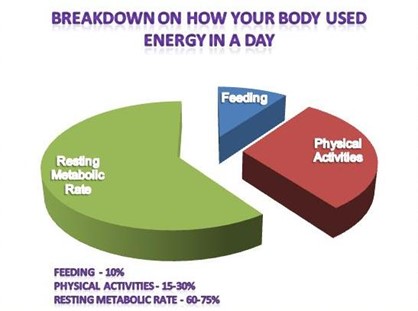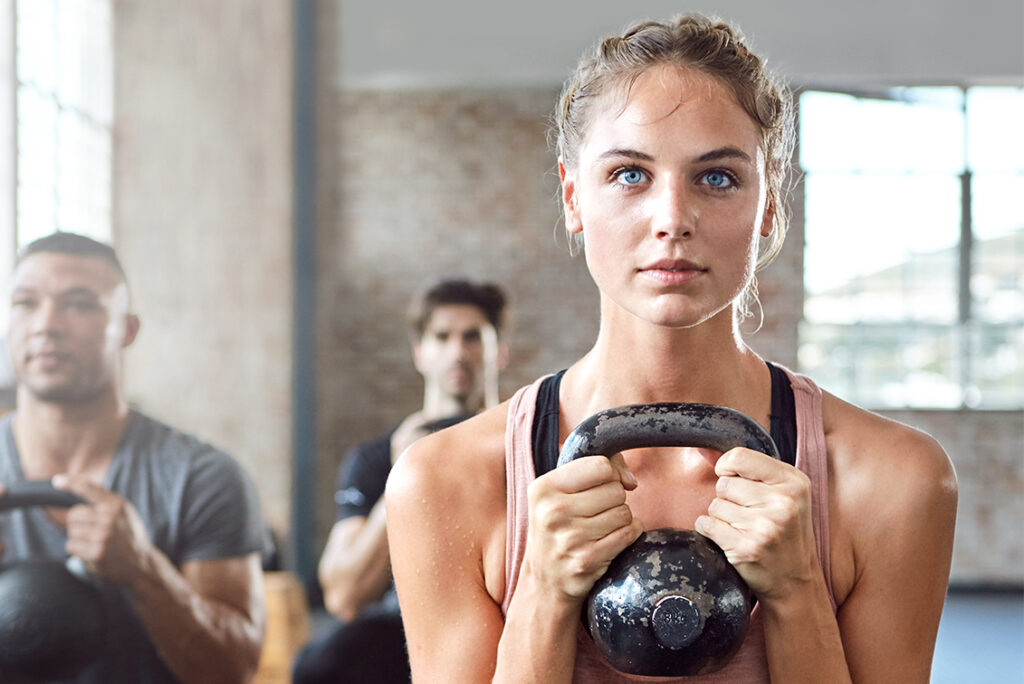Written by: Sebastian Mann (Exercise Scientist / Personal Trainer)
Most people think that “doing exercise” will help to speed up their metabolism. However, while mostly true this statement needs to be explained with further information in order for you to understand how you can improve your metabolism.
The Ways to Burn Calories
The word “metabolism” essentially means “burning calories to give your body the energy it needs.” and there are three ways that your body burns calories:

1. The basal metabolic rate (BMR):
Your BMR accounts for up to 75 percent of the energy you burn every day. Your body needs to supply your organs with energy even while you do nothing, and that’s what your BMR is: the calories your body burns to simply stay alive. For example, the total energy burned that you would find whilst you are sleeping.
2. The thermic effect of food (TEF):
When you eat, your body has to turn up the heat in your digestive system in order to process the food. It requires more energy than when you’re sitting with an empty stomach. The TEF usually accounts for no more than 10 percent of the energy that you use in a day.
3. The physical activity energy expenditure (PAEE):
This is any energy that is burned while you are working out or doing any kind of activity. Whether you’re taking out the garbage, writing with a pen, walking up the stairs, picking up a box, or lifting a couch, this is the PAEE. It’s all dependent on your movement (activity) during the day.
The amount of energy that you burn in a day is the sum total of these three calorie-burning methods.
So, how does exercise affect your metabolism?

The Effects of Exercise on Your Metabolism
The PAEE is always directly affected by the amount of activity you do in a day. The more exercise you do, the more calories are burned by this expenditure. Increasing the number of calories you burn via PAEE is one way to speed up fat burning.
However, the question remains: “Do I burn more calories after exercising?” This is where your exercise affects your resting metabolic rate, your RMR.
When you lift weights, run, jog, walk or use your muscles, your body uses up the glucose it has stored in those muscles. It takes energy (calories) to replenish the glucose in those muscles, so doing exercise burns energy (calories) in the muscles as well as the energy that your body uses to refuel the muscles.
With lower intensity exercise such as aerobic or endurance training there is a greater utilization of fatty acids as fuel instead of glucose for the body. This process improves our aerobic and cardiovascular system, increasing our ability to deliver oxygen throughout our body along with our ability to metabolize fat for fuel.
However in most cases, there is less of a need for the body to restore glucose due to a greater utilisation of fat.
Higher intensity exercise however, unlike lighter intensity exercise can be used to work on our ability to quickly use, metabolize and store glucose within our blood and muscles.
When we exercise we create what’s known as micro tears within our muscles and when we rest, these micro tears are healed and create muscle growth as the body’s response to adapt to that activity over time.
When you do high intensity exercise or strength training, not only are you using increased amounts of glucose in the muscles, but you create more micro tears within the working muscles in comparison to lower intensity exercise such as walking and jogging.
This “damage” to the muscles means the body must repair more tissue. This requires the body to send a lot more fuel to the muscles, which takes longer and the amount of time it takes to refuel your body varies from person to person, but during the time that it is refuelling, your BMR is increased – turning more food into energy (calories) to be used to repair muscles.
This is why low intensity, endurance, and steady state training DO NOT raise your RMR as high as high intensity exercise or lifting weights..
So What Does this Mean?
Simple: if you want to increase your metabolism (BMR, in this case) it is important that you should include exercise of all intensities especially that of higher intensity for glucose metabolism and lower intensity exercise for fat metabolism.
If you are interested in learning more about how you can lose weight, improve your health and fitness come in and speak to one of our Exercise Physiologists or Personal Trainers at Inspire Fitness for Wellbeing, or call us on 9857 3007
